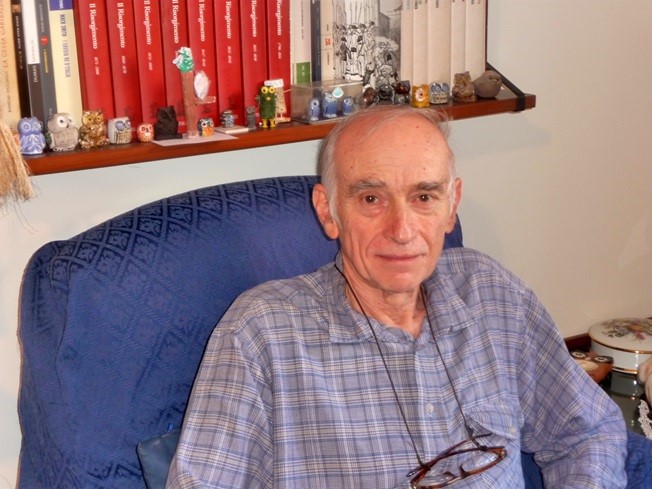 Roberto Fanti (family photo)
Roberto Fanti (family photo)
Roberto Fanti
Contributed by Paola Parma and Hans de Ruiter
Roberto Fanti was born on the 26th of November 1941 in Bologna; he passed away on the 20th of October 2023 in Milano.
Roberto Fanti graduated in Physics from the University of Bologna in 1964; he already was a member of the group of scientists and technicians that undertook the construction of the Italy's first and biggest radio telescope. The E-W arm of "Croce del Nord" (Northern Cross) was finished in 1964 as well, and work on radio surveys immediately started. The second survey realized with the complete Cross resulted in the B2 catalogue of radio sources, and this turned out to be a milestone in radio astronomy. Optical identification of faint radio sources (fainter than, e.g., the 3C sources), led to new samples of faint radio galaxies and quasars. For many years these B2 samples were used by the international community of astronomers, and they still are until the present day. Roberto immediately understood the importance of follow-up work at higher angular radio resolution, which had become possible as newer radio telescope arrays were being constructed or planned. He therefore started, around 1970, a collaboration between the Laboratory for Radio Astronomy (as it was then called), and the Westerbork Synthesis Radio Telescope (WSRT), located in the north of the Netherlands. The WSRT was new, and, in principle only accessible for Dutch astronomers (truly international collaborations were still a thing of the future). However, the Bolognese radio astronomers managed to do regular observations with the WSRT, and because of this they entered an era of international (at first mainly European) collaboration, of which the contacts between Italy and the Netherlands became a fundamental pillar. The contribution of Roberto and Carla Fanti was most important in this.
As soon as the VLBI observations in Europe started, Roberto and Carla were among the first to use this technique for observing the compact steep spectrum sources (CSS). Almost after 35 years, the paper "On the nature of Compact Steep Spectrum Sources" is still fundamental in the study of radio galaxy evolution.
Roberto Fanti had a profound knowledge of both physics and astrophysics, and was also an excellent University professor, who introduced the latest developments in radio astronomy to several generations of students. Although his employer was the University, he always did his scientific work at the National Laboratory of Radio Astronomy (later known under the name Institute of Radio Astronomy of CNR and nowadays of INAF). Roberto was a full Professor of Astronomy and Astrophysics, and, at the end of the 1990s, Director of the Faculty of Astronomy. He taught the Physics I and Physics II courses and also a course on radio astronomy.
The way he taught, his clarity and brilliance, made him one of the most admired teachers and colleagues. Very characteristic was also his modesty and correctness, showing how you could be a great scientist and make room for new generations at the same time. His humanity will perhaps be remembered (and missed) most. In all these years, since the 1960s till his death in 2023, Carla Giovannini Fanti was always at his side and fully shared the beautiful adventure that is the study of the Universe.
![[IAU logo]](iau_wb_thumb.jpg)
![[URSI logo]](URSI-logo-thumb.jpg)
![[Karl Jansky at his antenna]](jansky_photo_02_thumb.jpg)
![[Reber's Wheaton antenna]](Reber_Telescope_Wheaton_thumb.jpg)
![[Dover Heights]](Dover_Heights_02_thumb.jpg)
![[4C telescope]](GB61-195_4C_telescope_thumb.jpg)
![[Ewen and horn antenna]](ewen_horn1s.jpg)
![[Dwingeloo, 1956]](Dwingeloo-1956-thumb.jpg)
![[Jocelyn Bell Burnell and Cambridge antenna used in pulsar discovery]](burnell2_thumb.jpg)
![[Lovell Telescope at Jodrell Bank]](site_1594_0001-500-334-20180316163019-thumb150.jpg)
![[Wilson, Penzias, and Bell Labs horn antenna]](wilson-penzias-horn_thumb.jpg)
![[6-m Millimeter Radio Telescope in Mitaka, Japan]](6m-thumb.jpg)

